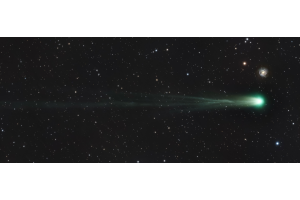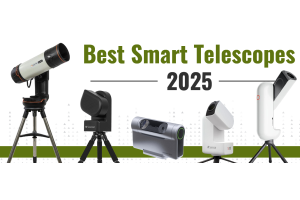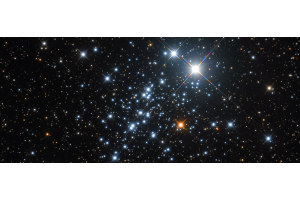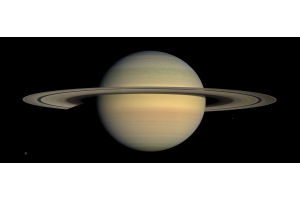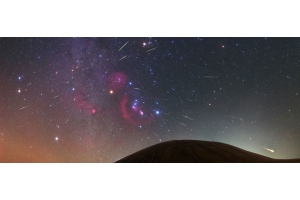
In this episode of What's in the Sky this Month, Teagan reviews some of the beautiful celestial objects you can see in the month of July 2023!

Image credit: NASA, ESA, and STScI
Messier 8 - Lagoon Nebula
- Type: Diffuse Nebula
- Constellation: Sagittarius
- Distance: 4,300 light-years
- Magnitude: 6.0
- Apparent Diameter: 90’ x 40’
If you live under dark skies and have good eyesight, you might be able to catch a glimpse of the Lagoon with just your eyes. It’s relatively easily found, just about six degrees above Alnasl (Gamma Sagittarii), the star that marks the tip of the teapot asterism. This places M8 just barely within the same binocular field of view as the star.
The nebula is bright enough to be seen with binoculars under suburban skies, while telescopically, a low-powered eyepiece will show a dark band running vertically through the center of the nebula. The western hemisphere is brightest, with NGC 6530, an open star cluster, glimmering in the east.
OUR NEAREST NEIGHBORS
Mercury, Venus, and Mars each appear close to the star Regulus this month. Mars is closest on the 10th when about 0.8 degrees will separate them, with Venus being closest from the 14th to the 16th, with 3.5 degrees between them. A thin, crescent Moon appears to the right on the 18th, low over the horizon at about 15 minutes after sunset, with Mercury about 6 degrees to its left. The next night, the Moon appears above and between Mercury and Venus, then above and between Mars and Regulus on the 20th, with Venus glinting below them all. Mercury, Venus, and Regulus all fit within the same binocular field of view from the 25th to the 28th, with Mercury just 7 arc minutes from Regulus on the 28th. Saturn is best observed after midnight, while Neptune lies just over the border in Pisces. A waning gibbous Moon passes Saturn on the 7th and Neptune on the 8th. Jupiter is visible in the predawn hours, with a waning crescent Moon to its upper right on the 11th, and to its lower left on the 12th. Uranus remains in Aries and is best observed in the second half of the month. Lastly, the Moon turns full on the 3rd and then new on the 17th.

Image credit: NASA, ESA, D. Bennett (University of Maryland), and K. Sahu (STScI); Image Processing: Gladys Kober
Messier 7 - Ptolemy’s Cluster
A great target for binoculars, M7 is a large open star cluster that fits into a low-powered telescopic field of view. Look out for a few pale gold stars, multiples, and chains of stars from the center.

Image credit: NASA, ESA, and the Hubble Heritage Team (STScI/AURA)
Messier 13 - The Great Hercules Cluster
You should be able to spot M13 with binoculars, even under light-polluted skies, but you’ll need a telescope for the best views. There’s some resolution at around 75x while increasing the magnification to 100x will show chains of stars carving a path out from the core.

Image credit: ESO
Messier 16 - The Eagle Nebula
A stunning target for astrophotographers, the Eagle Nebula is a challenging object for binoculars but shows reasonably well in telescopes. Binoculars will show the associated open star cluster as a small, reasonably bright hazy patch, while a small telescope reveals the nebula towards the south of the cluster. Averted vision and a narrowband filter will help to show more.

Image credit: ESA, NASA and J. Hester (ASU)
Messier 17 - The Swan Nebula
M17 is bright enough to be seen with binoculars and appears as a small but bright hazy patch through regular 10x50 binoculars. A small telescope at low power reveals its shape, with the body of the swan being the brightest and the head possibly requiring averted vision.
STELLAR CONCEPTS
Nebula: A nebula (plural: nebulae) is a cloud of gas and dust in space, and they essentially come in two varieties: diffuse and planetary. Diffuse nebulae can be vast, spanning tens of light-years, and are the places where the stars are born. Diffuse nebulae also come in two varieties: emission and reflection. The molecules in an emission nebula are ionized and produce their own light, whereas a reflection nebula reflects the light of the stars within it. Lastly, a planetary nebula is the outer shell of gas and dust thrown off by a star during the final stages of its life.





